Postcards from Puglia
Where to stay, what to do, and the best places to eat in the heel of Italy
Greetings, readers! I am currently in my hotel in Slovenia, curled up in a bathrobe slathered in complimentary Byredo products, waiting on midnight room service (the best kind). I just flew in from London, where I had the best week exploring hidden corners and new (to me) neighborhoods, eating some of the best meals of my life, walking 10 miles a day, and enjoying the elusive UK sunshine. I am so excited to share more about what I did, including some wonderful art exhibitions going on this summer that you must see if you happen to be visiting. I’ll be posting my postcards from London later this week. Until then, my friend Lorenzo has kindly shared his postcards from Puglia, below.
Lorenzo is a wonderful food writer and photographer, and his recommendations have never ever led me astray. If you’re headed to the heel of the boot of Italy any time soon, I’d highly suggest using this as your guide.
Ciao,
Mindholiday friends, Lorenzo here. Honored to be sharing a Puglia rundown with you all. I spent two early summer weeks in Southern Italy. It feels like a part of the world that’s taking off in popularity (evident from the new JFK to Bari direct flight), and it makes sense why. Golden sun, sapphire waters, quaint towns, and a slow pace of life—Italian charm!! I’ll be taking you through my loose itinerary, sharing some hits—maybe even inspiring you to have an Apulian summer of your own.
Where I stayed
I was, unfortunately, not on that very first JFK to Bari direct flight… After landing in Rome and driving southeast out of town, I stopped for the first night in Matera, the third-oldest city in the world. Matera has a cinematic glow. It’s quiet, charming, scenic, and (obviously) historic. The hotel experience was pretty wild. Sextantio is a collection of beautifully restored caves (you read that right), with luxurious touches and dialed-in hospitality. Sleeping in a cave was an interesting experience, more than a truly great one. Eating breakfast in a cave, however, was very cool. All in all, Matera is a worthy stop for a night or two for the scenes and history alone (maybe a third night if you’re a James Bond aficionado).
I woke up from my cave and continued onward to Puglia. The next week was spent at Masseria Donnagnora, just outside Ostuni. Masserias, or farm stays, are historic, castle-like properties originally built for defense and self-sufficiency. Many of these structures are now renovated, preserving the charm, modernizing the offering. This was a phenomenal property—remote and peaceful, surrounded by olive groves. Having Ostuni as a home base was convenient, even though I found the town to be a bit touristy. There are plenty of grocery stores, cafes, and easy-access restaurants nearby. Ostuni is also the perfect home base for exploring the central part of the region—towns like Martina Franca, Alberobello, and Monopoli. If you’re keen on seeing Bari, the biggest city in Puglia, then definitely stay closer to Monopoli or Polignano a Mare.
The second week, I migrated further south into Salento, where I posted up in a small town called Galatone. It was an incredibly cool Villa situation booked through Le Collectionist—another ancient structure tastefully renovated (I came to learn that the Italian government subsidizes restoration projects like this – kinda cool). There wasn’t much going on in Galatone proper, but it was just 15 minutes to Nardò, Gallipoli, and a few minutes further to Lecce. The South is certainly more coastal-oriented. White-sand beaches and crystal-clear waters of the Ionian Sea to the West, rocky coastlines and the sapphire glow of the Adriatic to the East.
What I ate
Dinner at Masseria Moroseta was a special one—farm-to-table innovative cooking in a brilliant space. I’d send anyone remotely interested in food, design, or hospitality here. Osteria Botteghe was by far the best of traditional Apulian food – orecchiette in red sauce, fava puree with chicory, and slow-cooked beef cheek. Da Silve in Fasano was an incredibly memorable experience. The restaurant is run by a mother-son duo, Maria and Silve. They’re warm, inviting, and hospitable beyond belief.
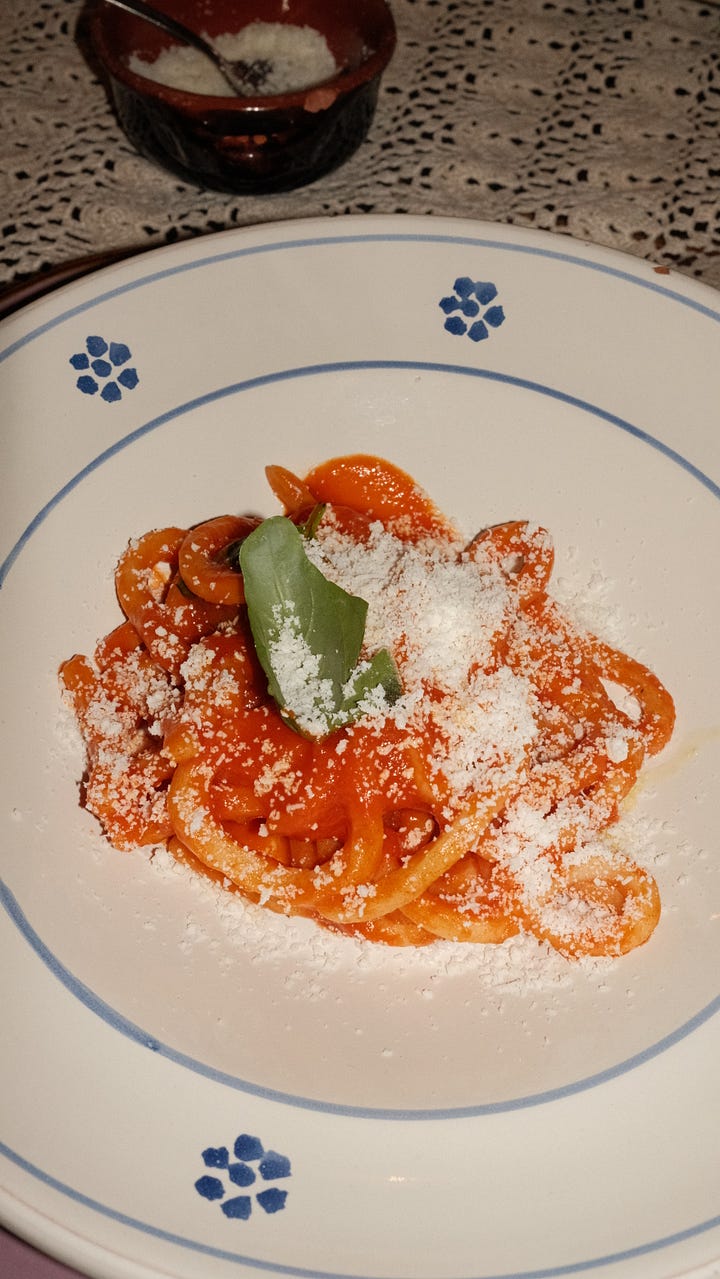
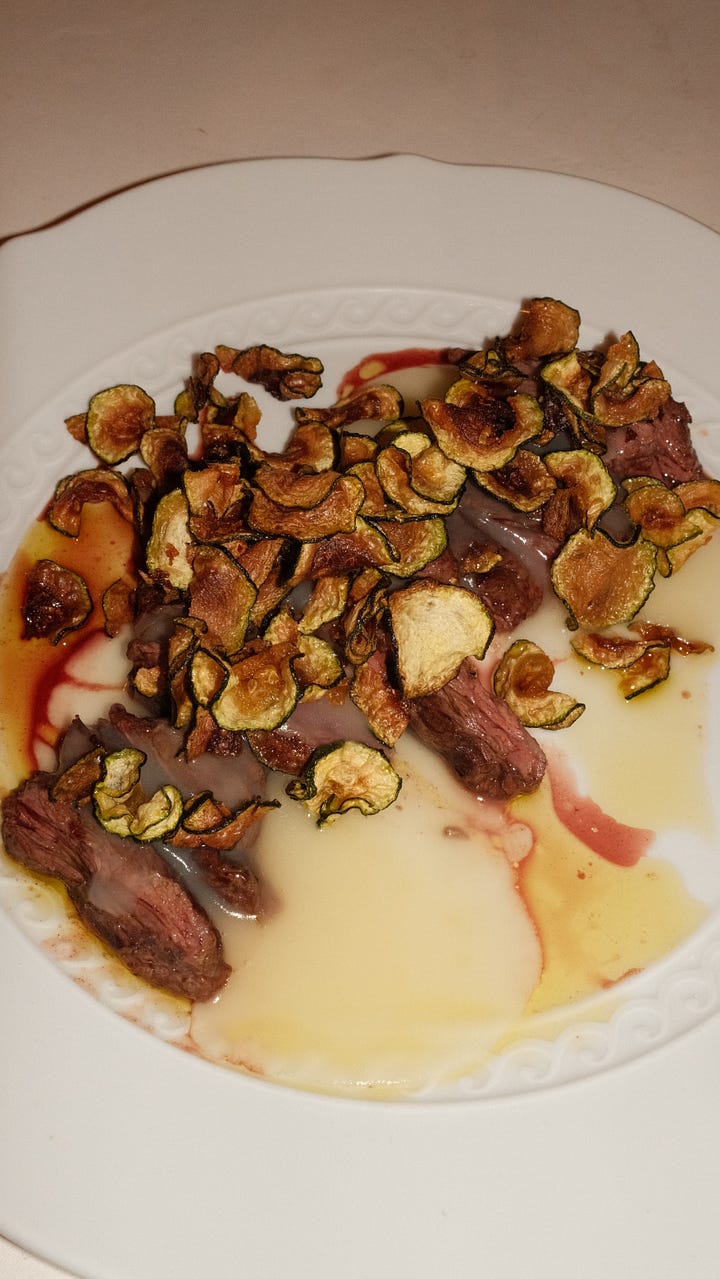
While many of the restaurants that I researched and sought out were very good, great meals on a whim were harder to come by. After a few duds, I shifted the focus to acquiring great produce and ingredients and cheffing at home. The grocery stores and open-air markets are unbelievable, making this a very easy endeavor. Martina Franca’s open-air grocery market on Wednesdays was especially impressive. I hauled in tomatoes, zucchini, so many peppers, eggplant, the juiciest strawberries, peaches, and mulberries! Plus, the best almonds of my life, and olives that could turn an olive-hater into an olive-lover, I swear. Fresh seafood is abundant at the bustling pescarias. Rustic baked goods can be found on almost every corner. Cooking with Puglia’s native ingredients was a real treat.
Speciality coffee is a rare commodity in Italy, and thus, I was mostly crushing single shots of espresso (with a spoonful of sugar, poured over ice—brilliant). With that being said, Burro cafe in Ostuni is a gem. Probably the only place for pour over in the entire region haha. Minimal Scandinavian design, perfect coffee, and toast with cultured butter. Beautiful scenes and a nice, “modern” change of pace, which I always find myself craving after a few days of old school hangs.
Further south, Tavena del Porto in Tricase was my favorite meal of the whole damn trip. Seafood paradise, right on the coast of the Adriatic. I can’t recommend this place enough. Order the fish of the day as a crudo, and once finished, they’ll fry the remainder of the fish along with thin zucchini strips, and bring the fish back to the table as the second course. Get the chocolate caramel tart too.
What I did
I struck such a great balance of exploring and lounging on this trip. My default setting while traveling is to get out and seize the day. But Puglia’s restorative and slow-paced nature left me feeling no guilt about lying around and enjoying the sun. The afternoon heat is also no joke; a 2-5PM siesta is more than fair game.
I love to explore on foot—walking small towns, wandering down alleys, stopping into cafes, taking lots of photos along the way. Towns like Monopoli are perfect for a stroll. Every street opened itself up to beautiful angles and scenes of Italian life unfolding. I found my way into Cattedrale Maria Santissima della Madia, which was a gorgeous Roman cathedral open to the public. I watched the ships roll in at Lungomare Porto. Had an espresso at the Piazza Giuseppe Garibaldi. Lovely day.

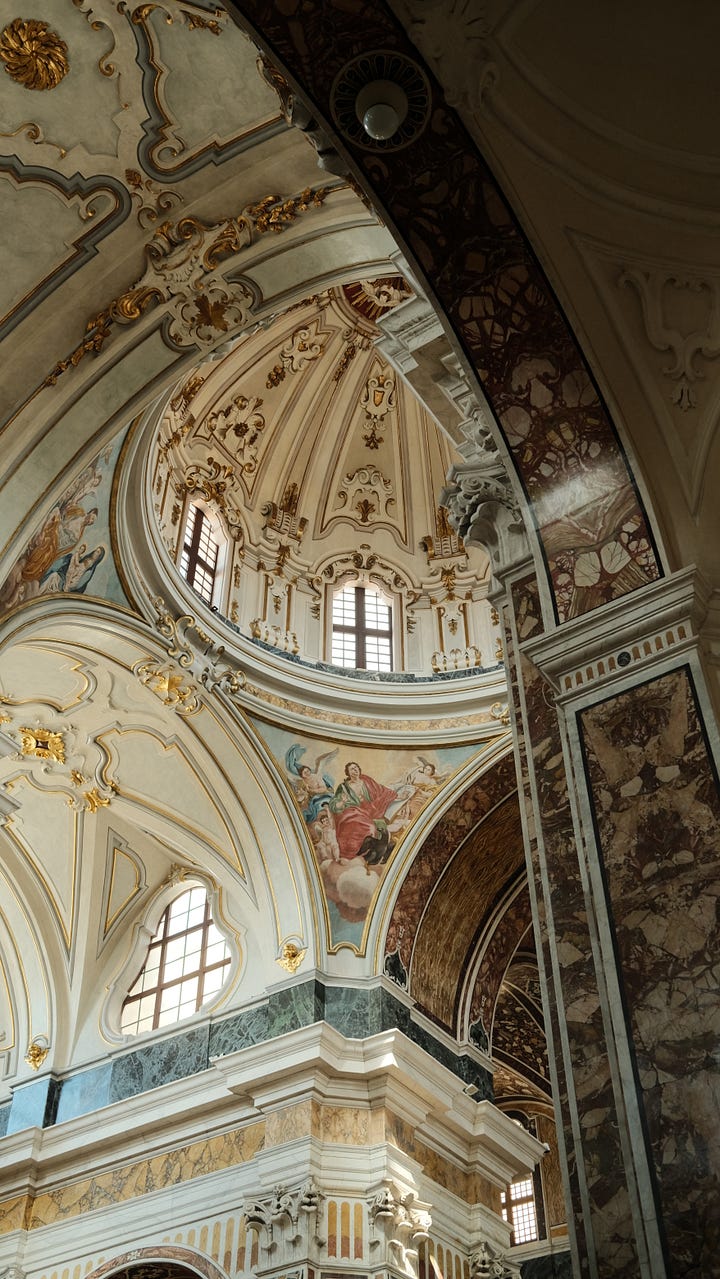
Out in that direction, I made a reservation in the bar room at Borgo Egnazia, based on my friend Tess’ (phenomenal) recommendation. I’m gonna pass that rec along—Borgo was sick. The 5-star hotel is marvelous, like a truly unbelievable compound. A bar res gets you on site, sipping damn good Negronis as the sun goes down. If you’re a real baller and you’re staying at Borgo, you can obviously do this whenever you want (I seriously respect your game).
Every town in Puglia, no matter how small or seemingly insignificant, is worth a stop. I antique shopped in Ceglie Messapica, watched the amber glow of the sun hit the Trulli houses in Alberobello, and found the best sandwiches of the trip at a party store in one-road town that I’m pretty sure doesn’t have a name. On my drive from Ostuni to Lecce, I took a slight detour to stop in Grattiogle, which is known as the ceramic village. Super charming stretch, full of great merchants and handmade goods.

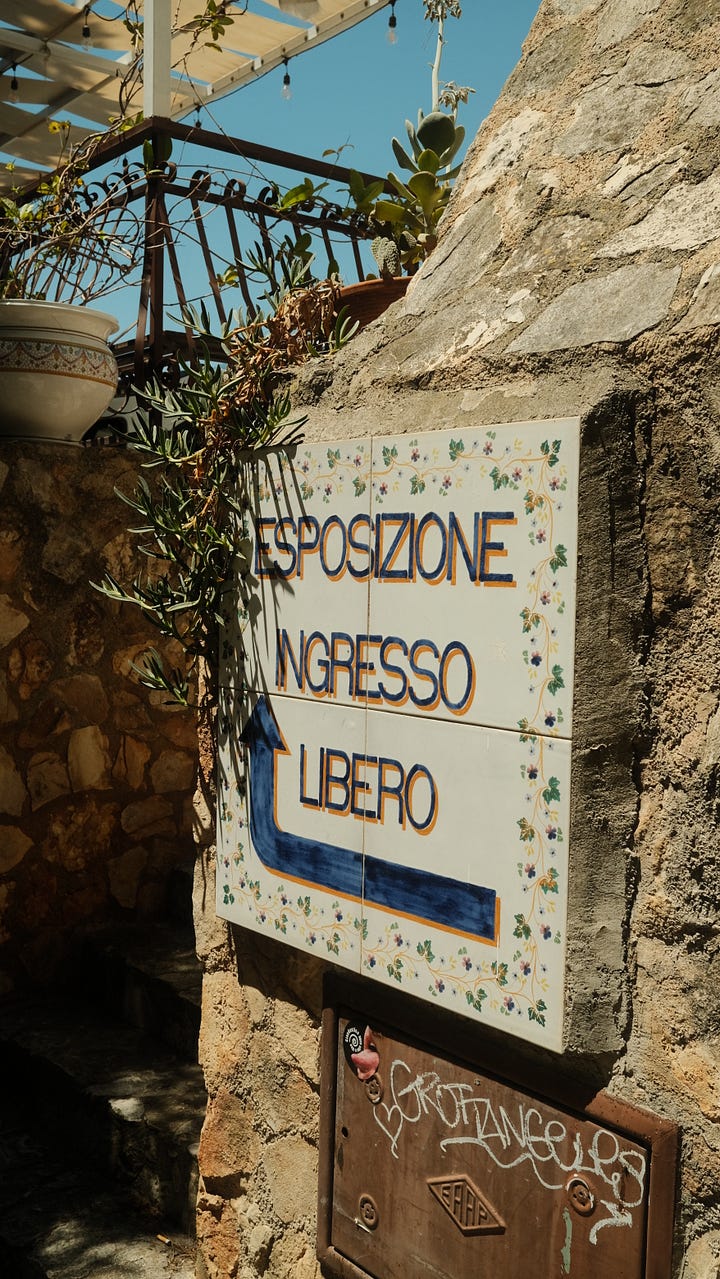
In the south, Lecce is the biggest city with the most to discover and uncover – it’s a must-see if you ask me.
Charm is a hard thing to pin down—it’s a mix of visuals, experiences, and feelings. When I feel at peace, inspired by my surroundings, free to be myself, stimulated by the scenes— that’s charm. Lecce’s charm comes from its cream-colored limestone facades, which gleam in the afternoon sun and glimmer in the evening light. It’s supported by the steady hum of the main throughfares, which fade to near silence as you duck into the calmer pockets of town.
My favorite day of the trip was a drive to Tricase, swimming in the rocky Piscine naturali, hanging in the port town all afternoon, driving up the coast, and finishing the day watching the sun set over the Bay of Otranto. I’d run that same itinerary back in a heartbeat.
On the opposite coast, the beach at Santa Maria al Bagno was a deep local hang that I really loved. Hiking to the rocky cove at Porto Selvaggio was another pocket that felt like it was a well-kept gem. I liked Nardò a lot—it was lively, and so untouristy. I ventured into the town square to watch the Champions League Final, where Inter Milan got trounced by PSG. Even in defeat, it was a blast to be around the passionate Italian supporters, watching them angrily stomp around when Zieliński would make a shit pass. There was pretty good panzerotti, and the Raffo was cold and plentiful.
There’s so much to love about Puglia. Even though I covered so much ground in two weeks, I still feel like there’s a lifetime’s worth to be discovered. I sincerely hope to return, and to maybe even slow it down even further next time.








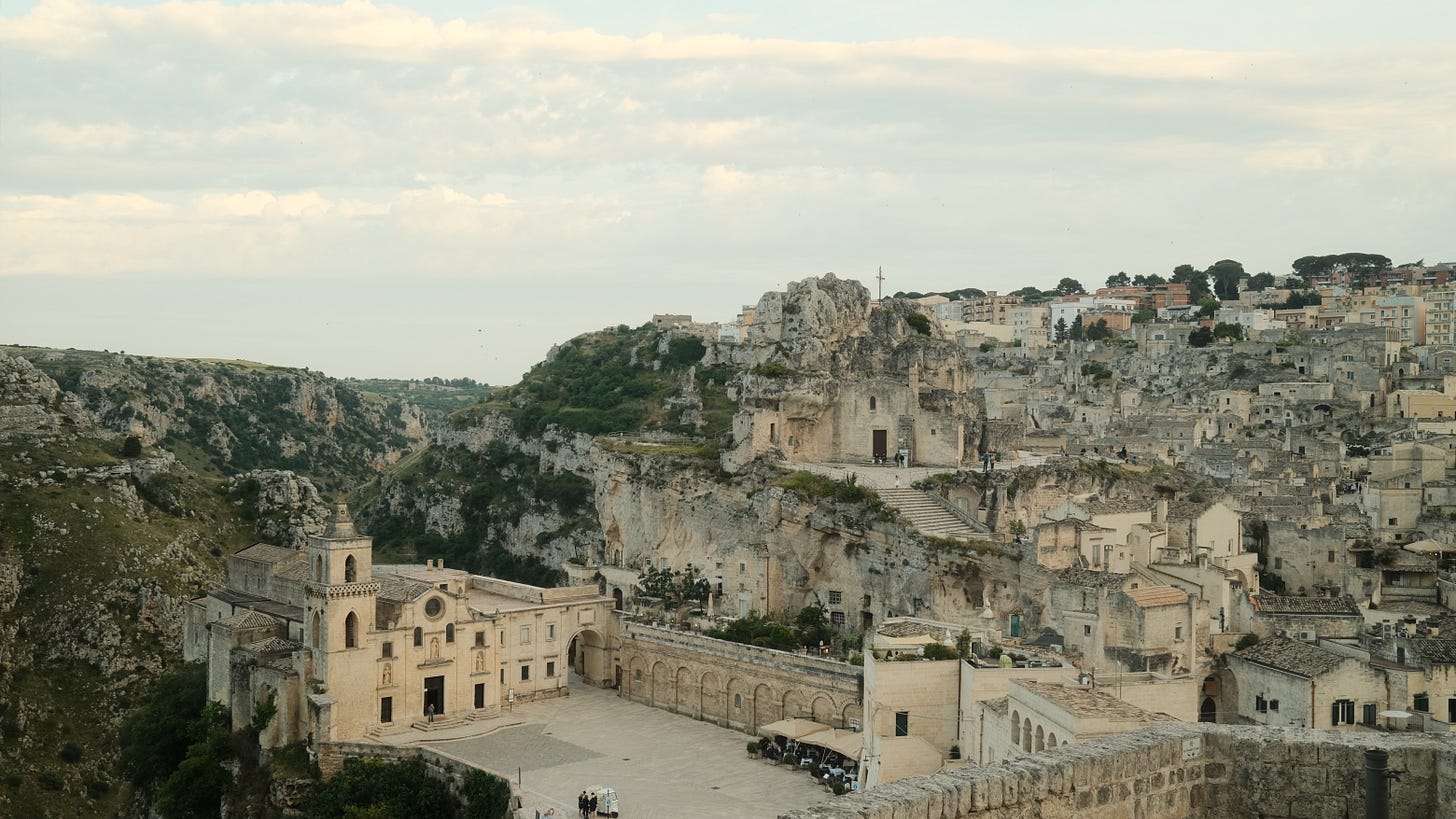
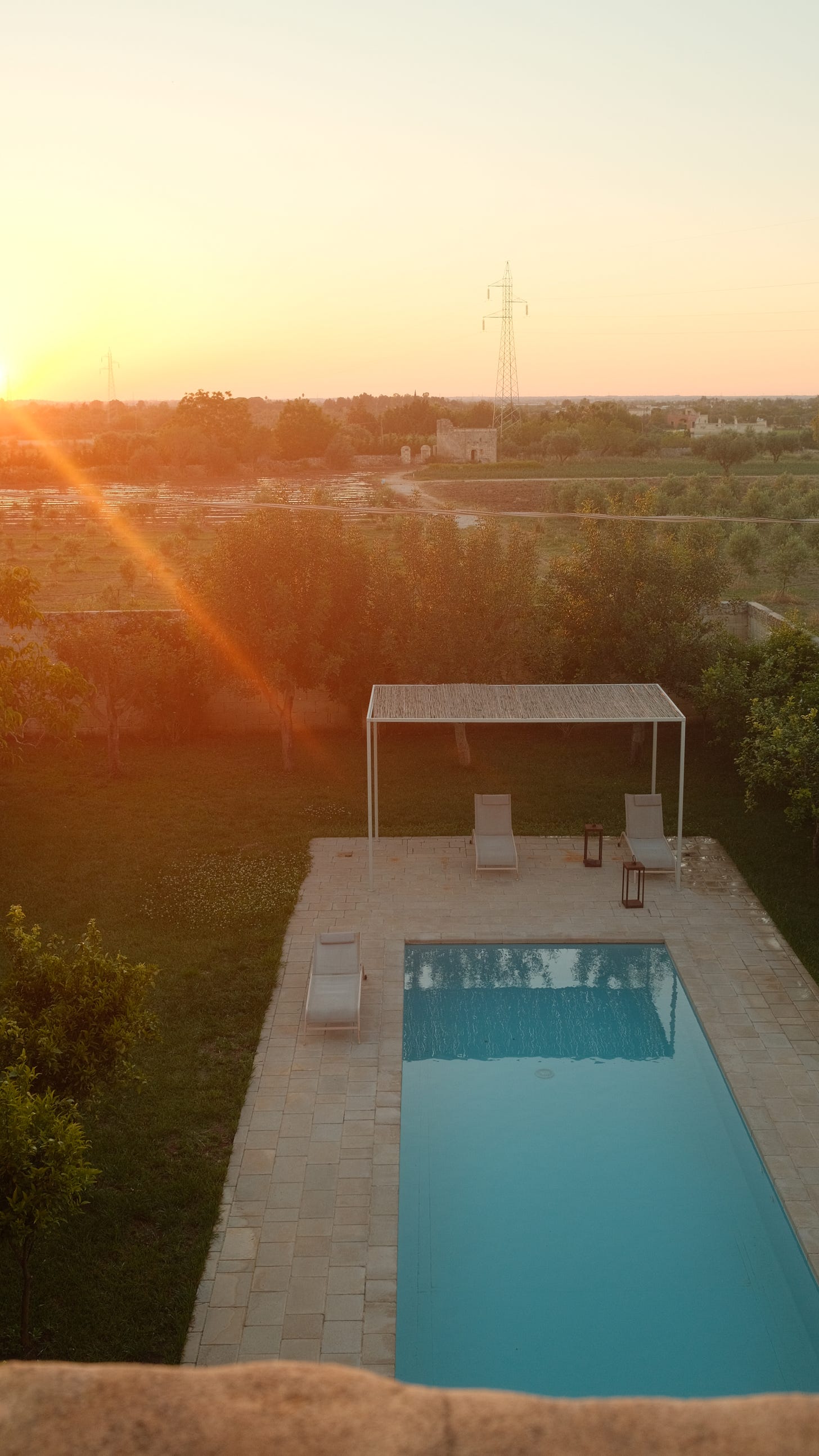
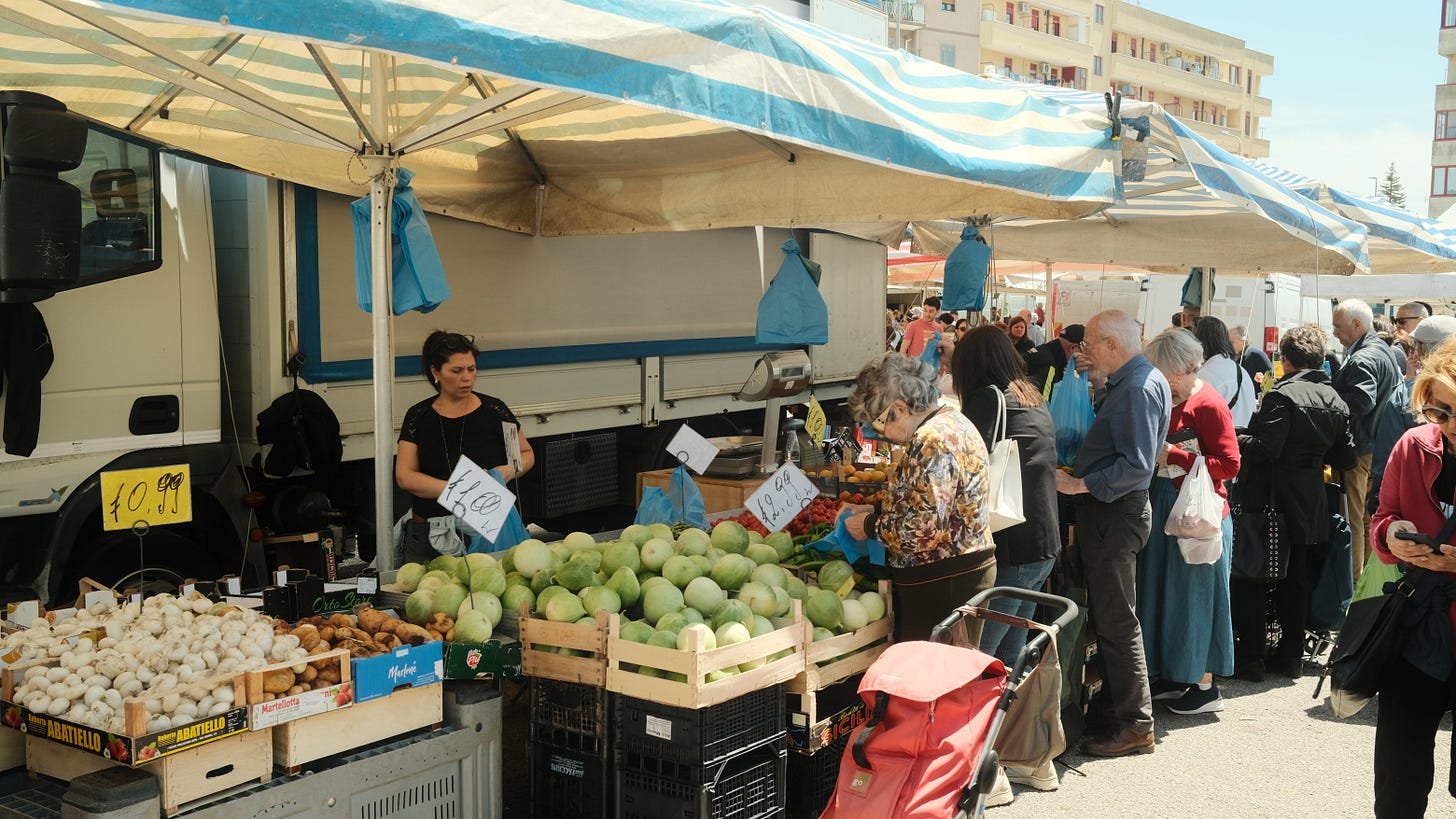
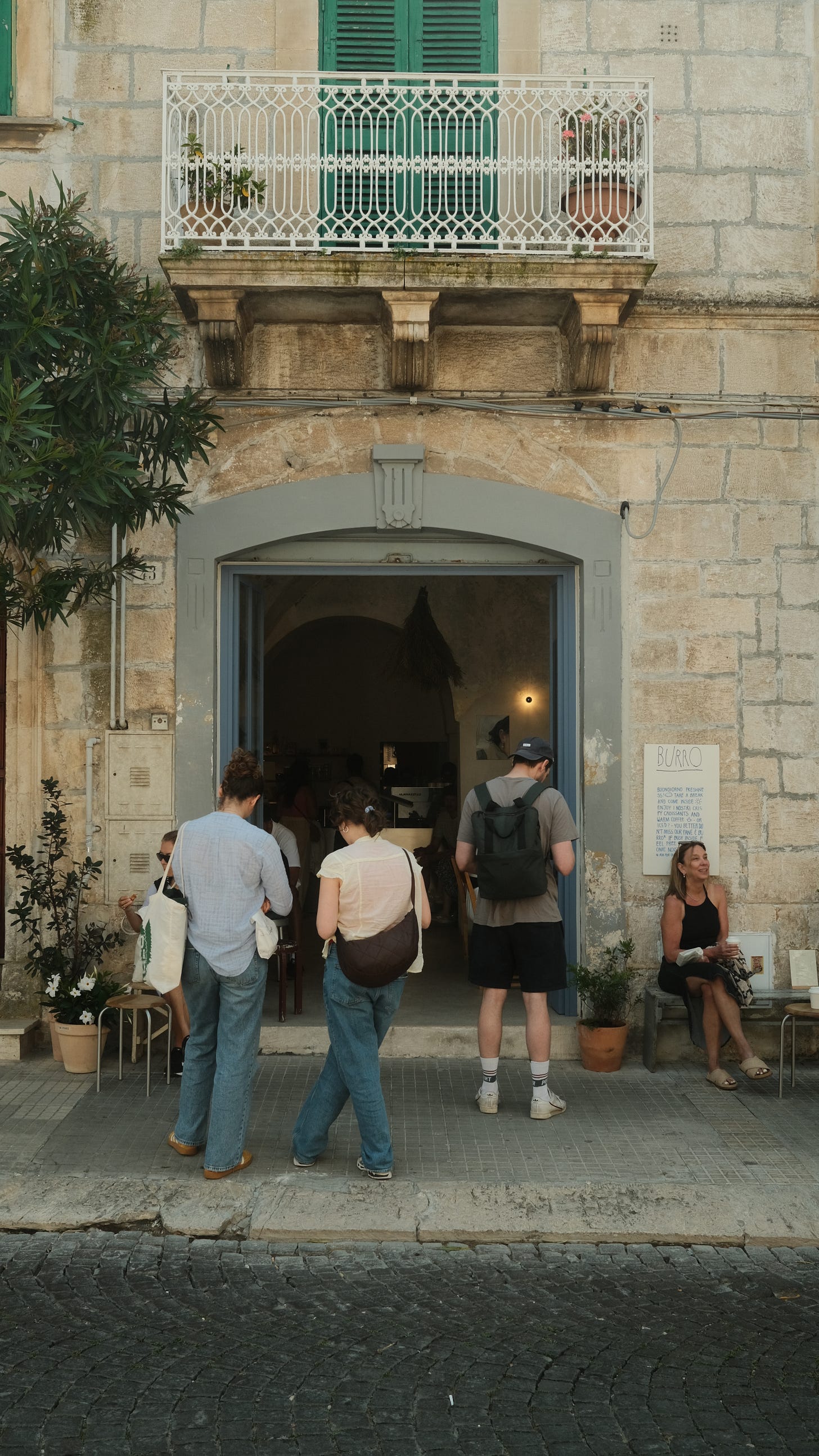
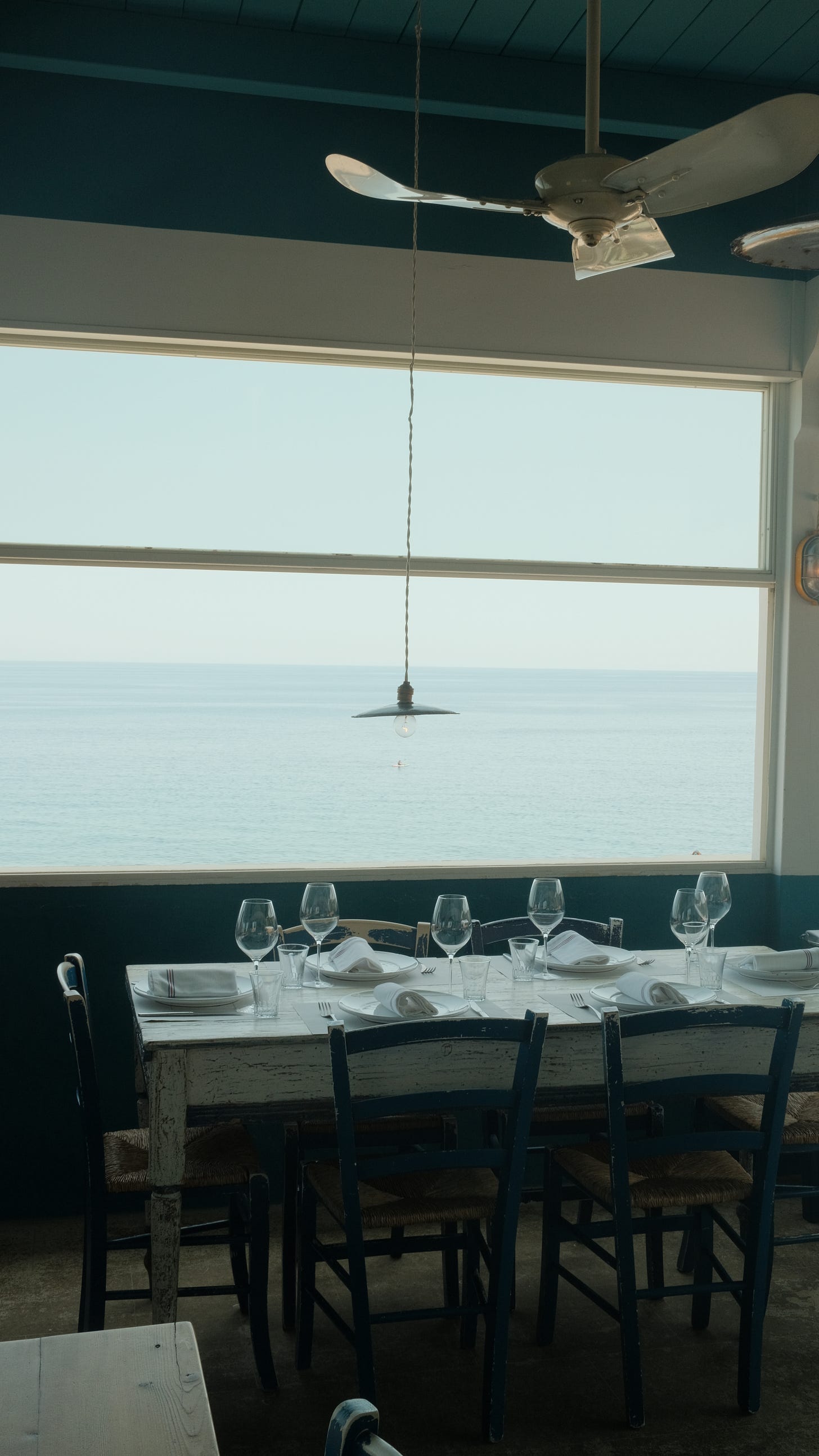
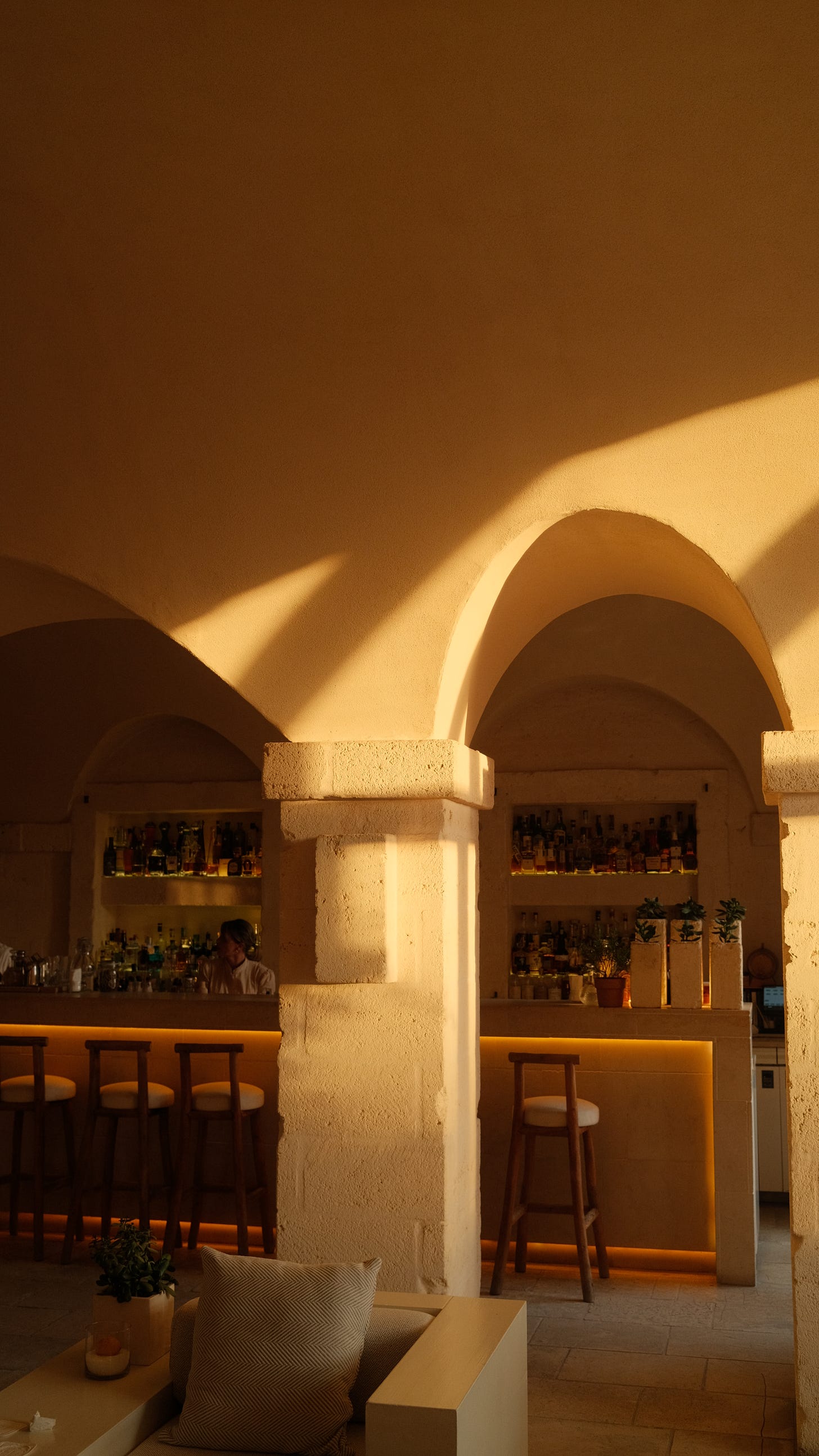

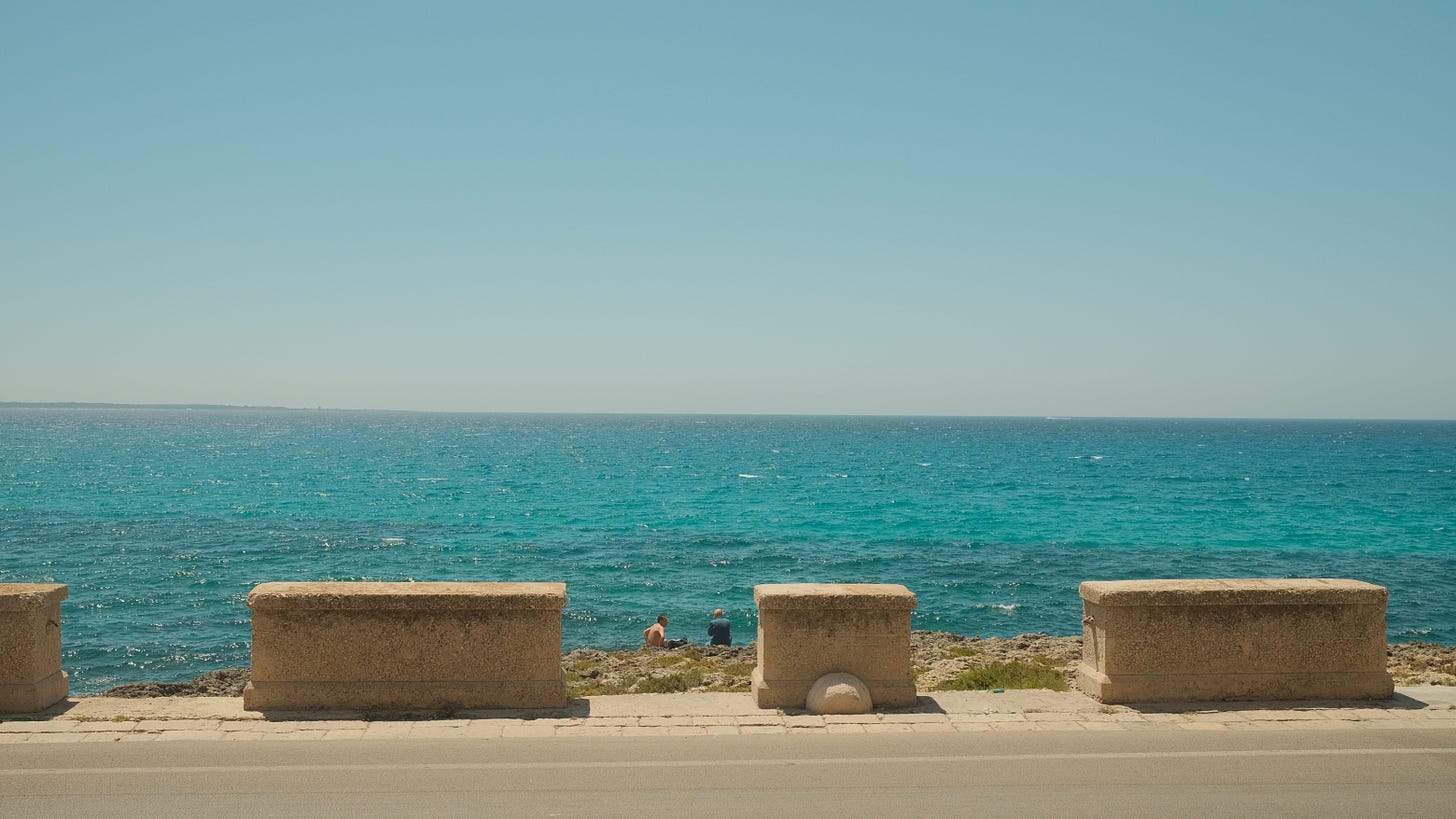

Beautifully written post about a gorgeous part of the world! One I visited yearly when I was little but wish to return to always :) Next time you go, visit Torre dell’Orso for surprisingly good ice cream. Thanks for bringing back so many memories!
Love this! We spent two weeks in Puglia a couple years ago, dying to go back. I’m sure it’s changed lots with its increased popularity.